Shape identification Geometry Worksheets for Ages 5-9
15 filtered results
-
From - To
Transform young minds with our Shape Identification Geometry Worksheets for Ages 5-9! Designed to make learning fun, these worksheets help children recognize and categorize different shapes effortlessly. Including engaging activities such as drawing, tracing, and coloring, our comprehensive sheets boost geometric skills while supporting fine motor development. Ideal for use in classrooms or at home, these resources cater to various learning styles, ensuring every child can excel. Dive into Kids Academy's collection and watch as your little learners master the vibrant world of geometry, building a solid foundation for future mathematical success. Download today and spark a passion for shapes!
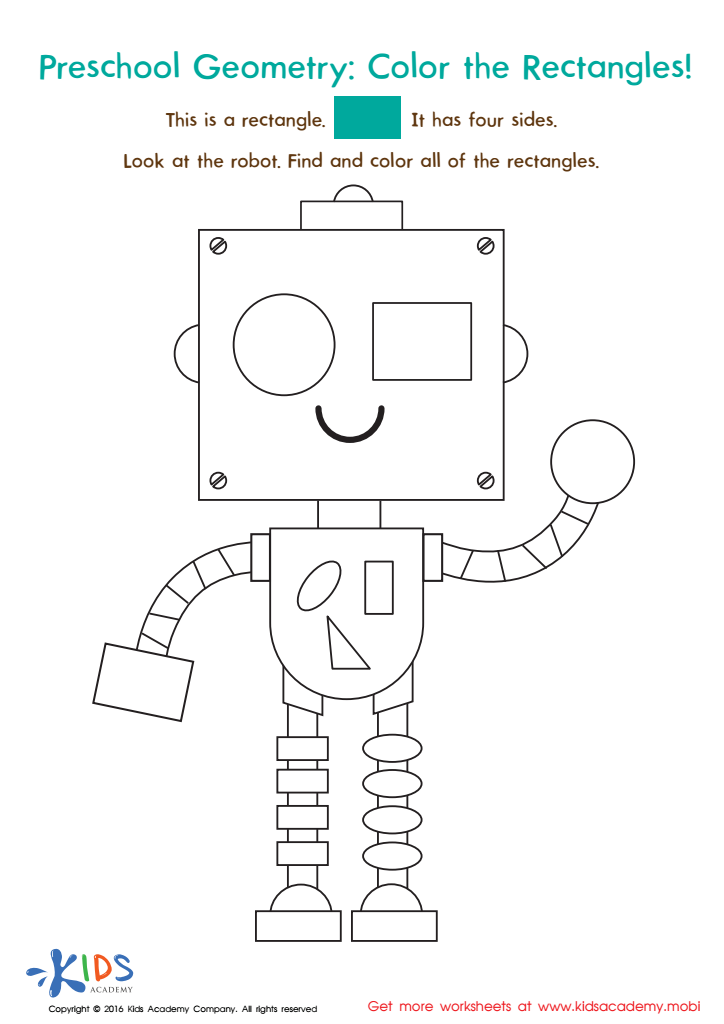

Geometry Worksheet
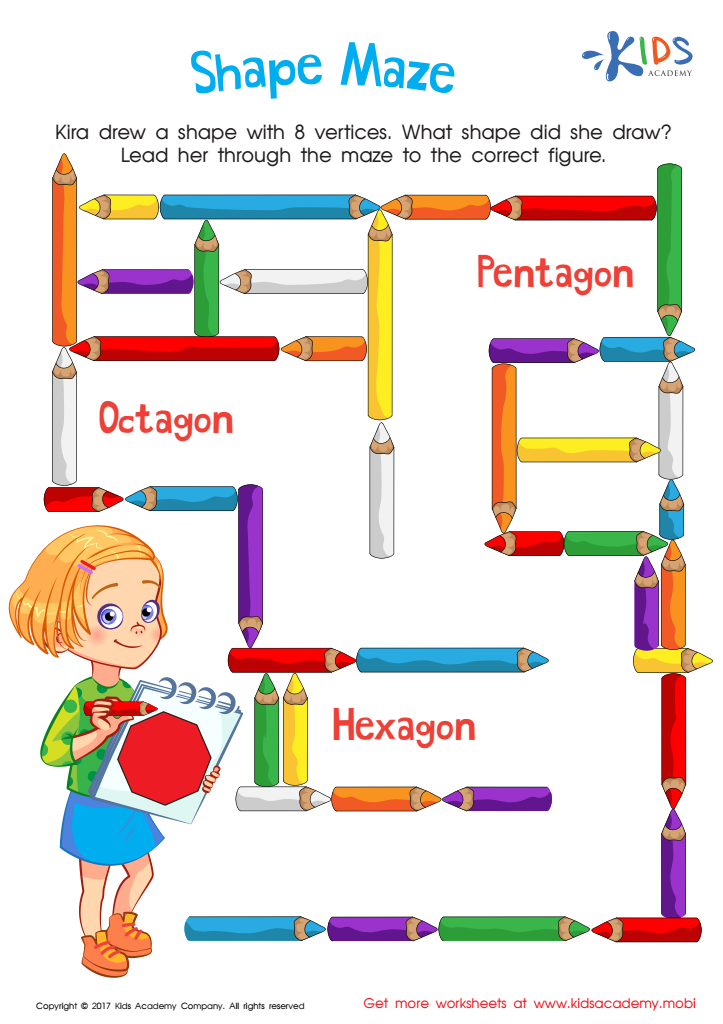

Shape Maze Worksheet
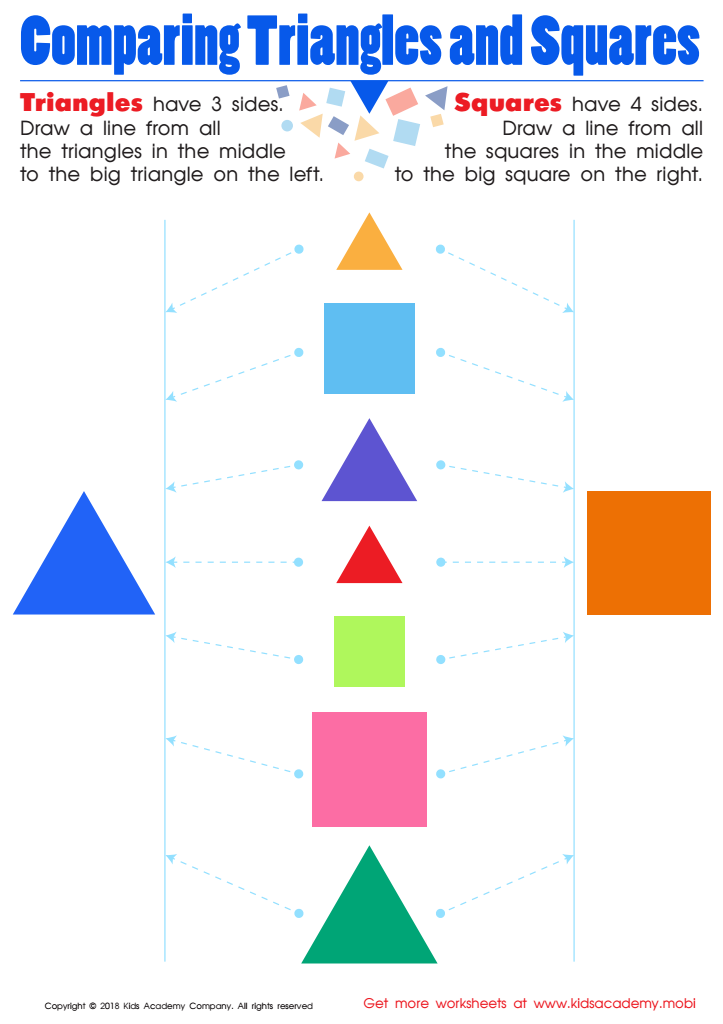

Comparing Triangles Squares Worksheet
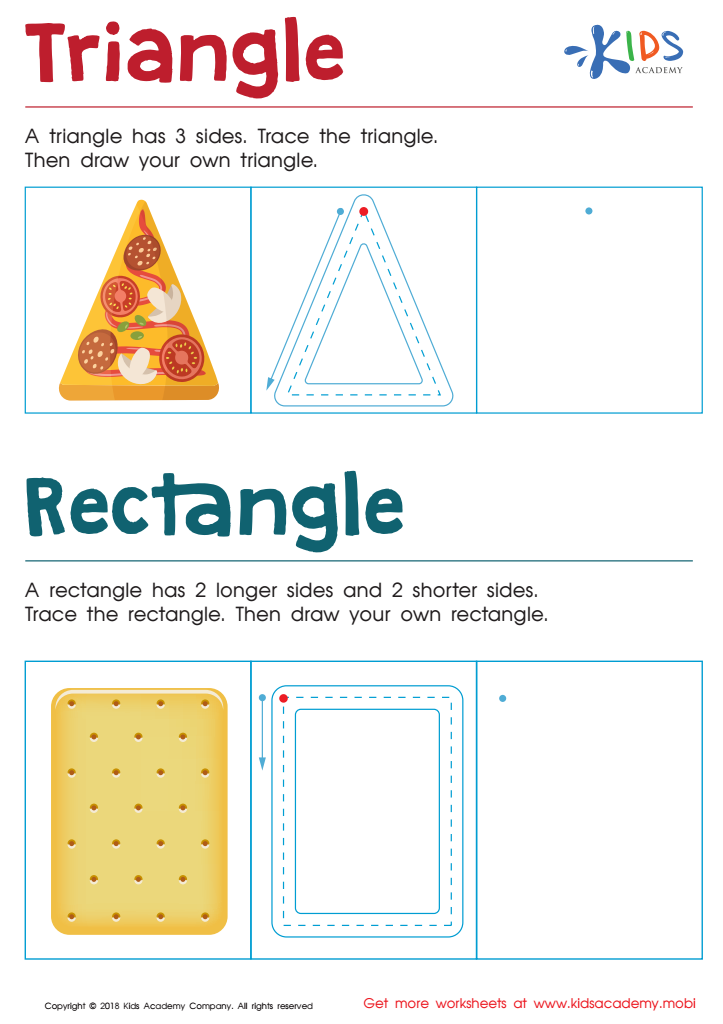

Triangle Rectangle Worksheet


Let's Look! Part 2 Worksheet
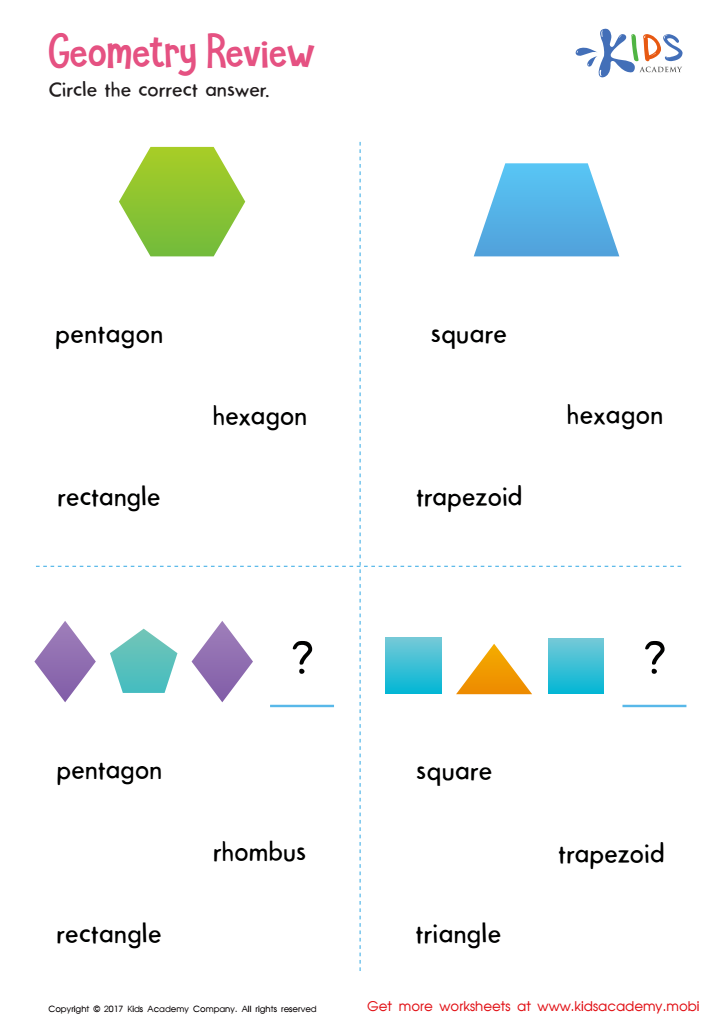

Geometry Review Printable
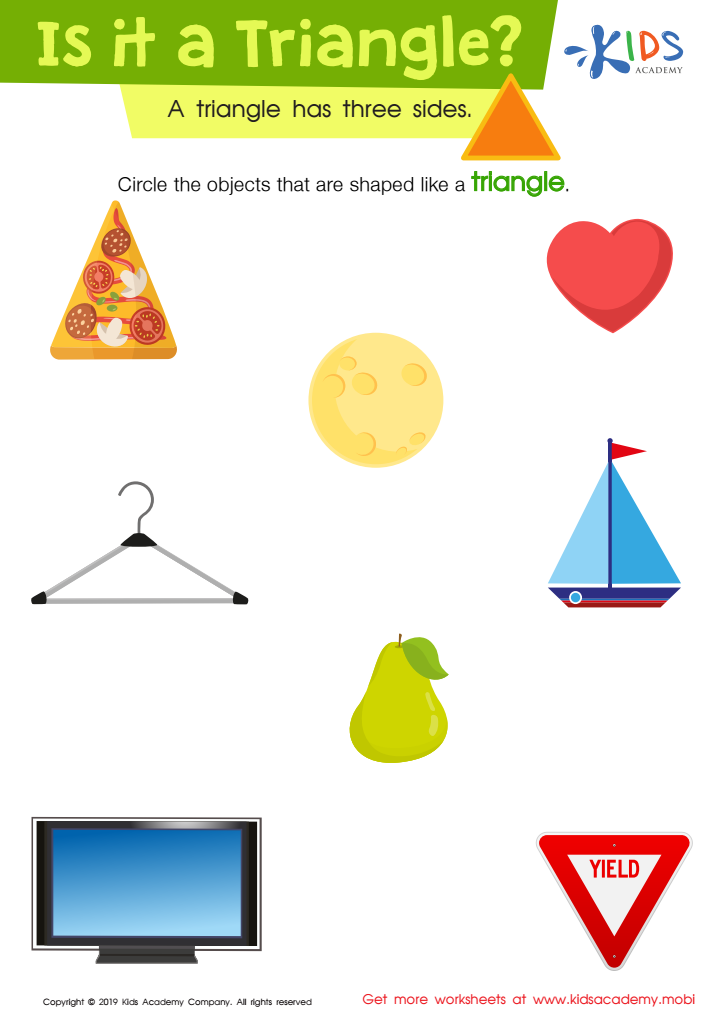

Is It a Triangle? Worksheet
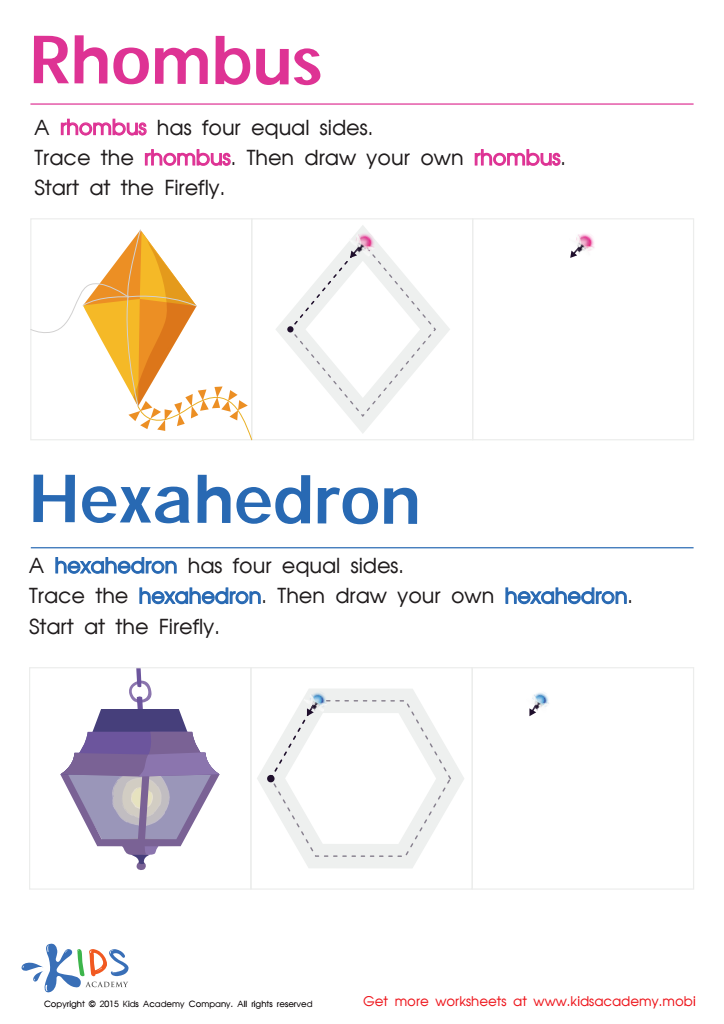

Draw a Rhombus And a Hexahedron Printable
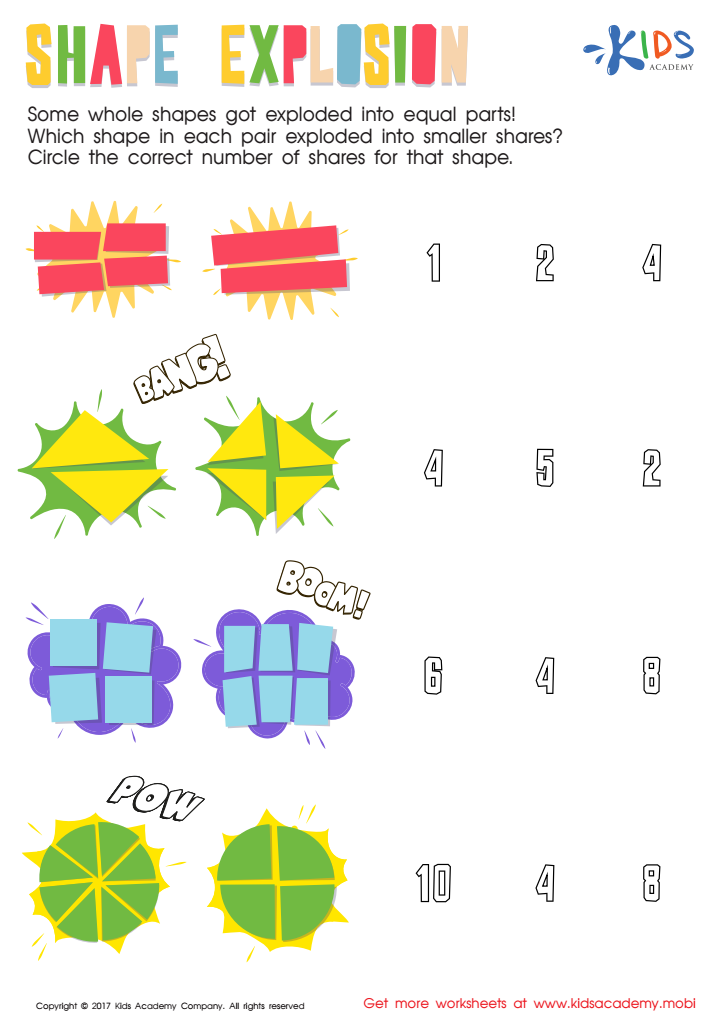

Shape Explosion Worksheet
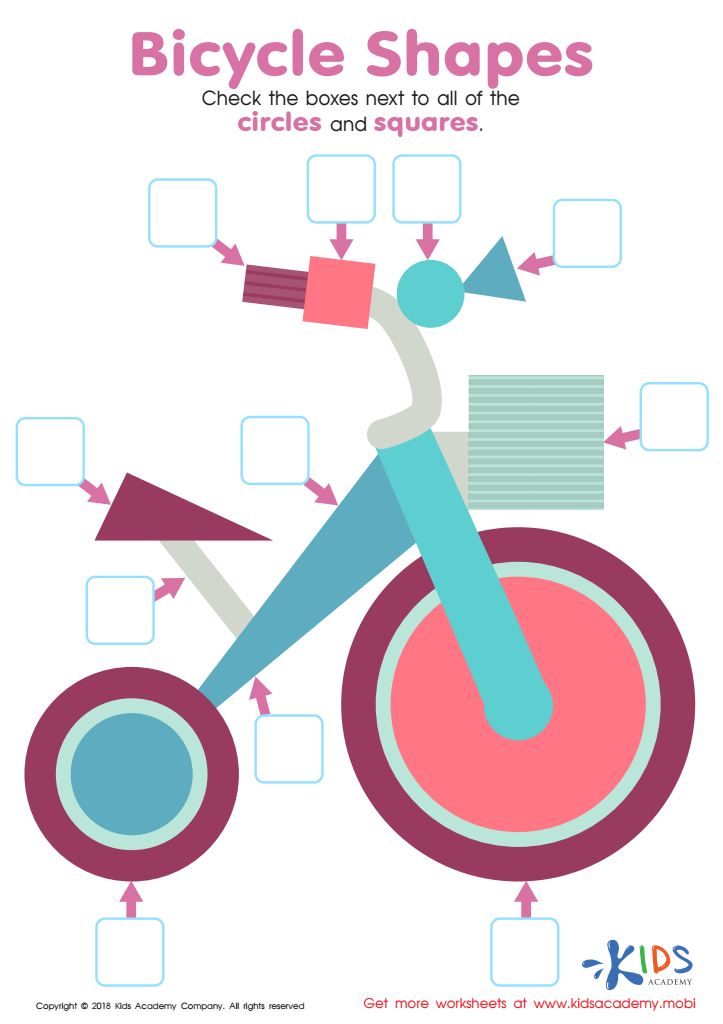

Bicycle Shapes Worksheet
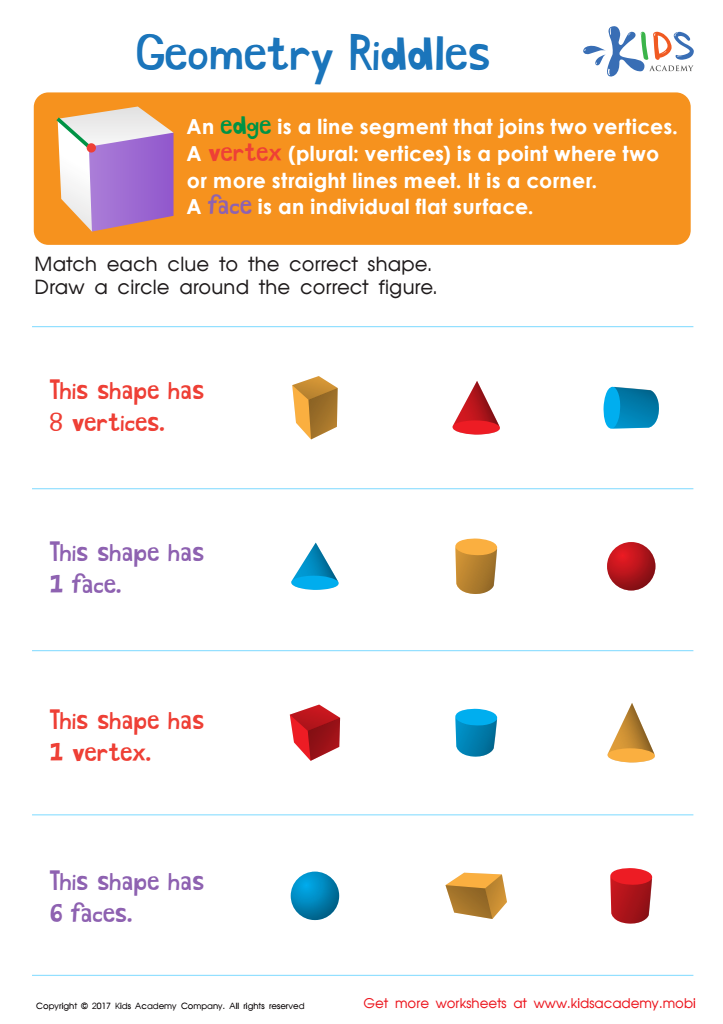

Geometry Riddles Printable
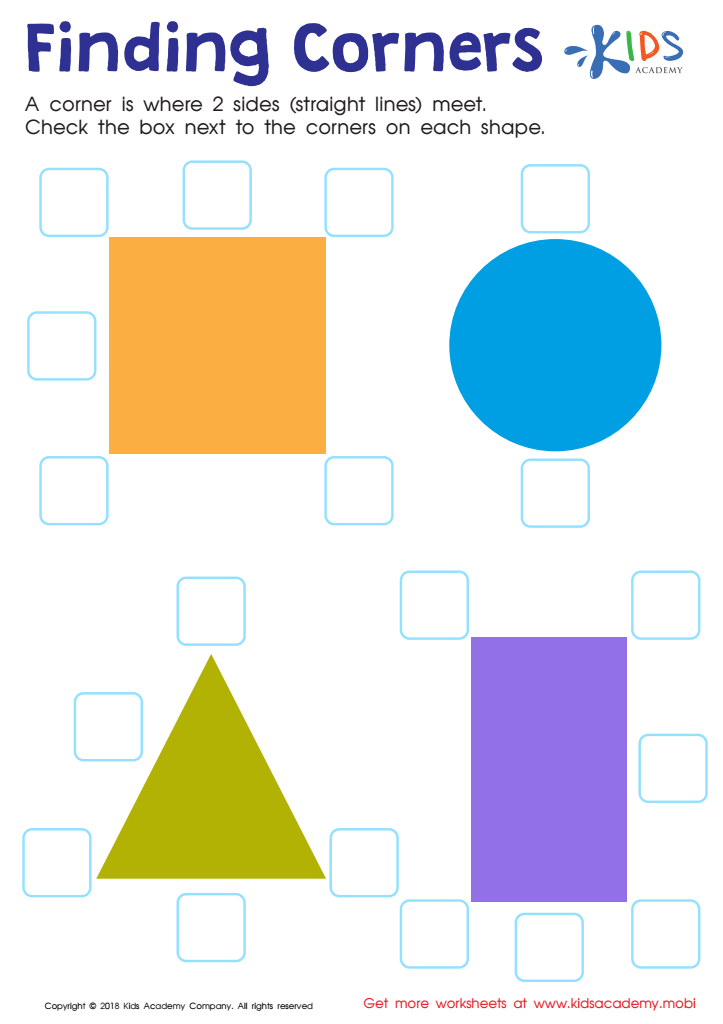

Finding Corners Worksheet
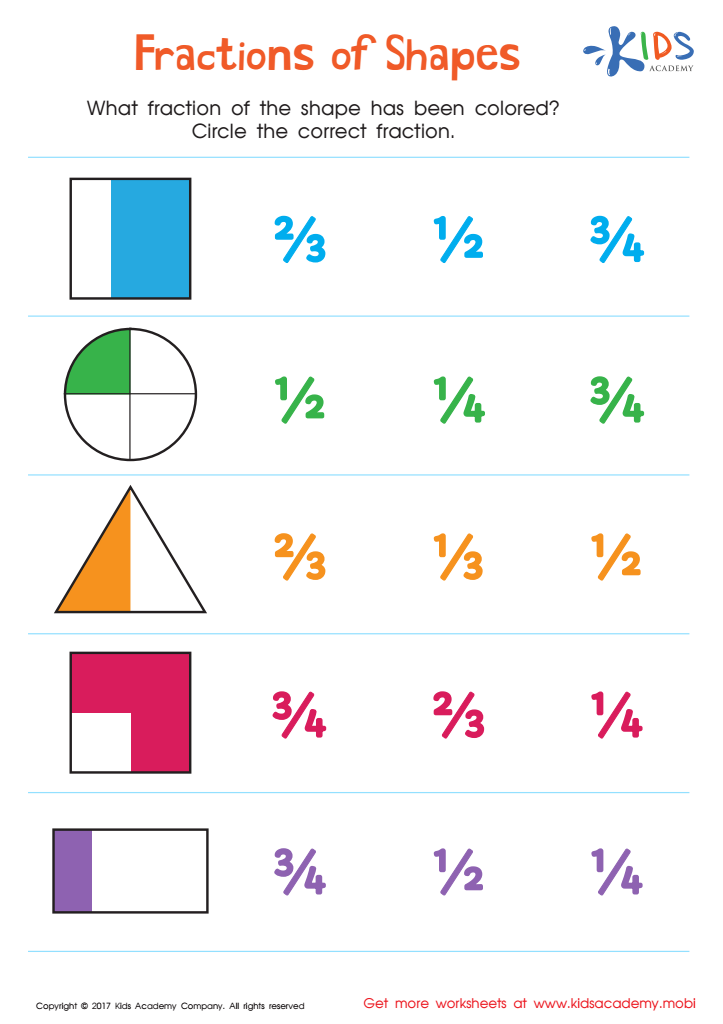

Fractions of Shapes: Math Concept Worksheet


Shapes Worksheet
Shape identification and geometry are fundamental components of early childhood education that play a crucial role in cognitive and spatial development. For children aged 5-9, understanding shapes is not just about recognizing circles, squares, and triangles; it's about laying the groundwork for more complex mathematical concepts and logical thinking.
Firstly, shape identification helps enhance visual-spatial skills. When children differentiate between various shapes, they learn to observe subtle differences in forms and patterns, which is critical for problem-solving and creativity. These skills are essential for future academic subjects, including science, technology, engineering, and mathematics (STEM).
Secondly, early mastery of geometry fosters critical thinking and analytical skills. When children identify and manipulate shapes, they engage in activities that require them to think critically and systematically, improving their ability to reason and understand how different parts form a whole.
Moreover, recognizing shapes is intertwined with language development. Describing shapes and their attributes helps children expand their vocabulary and improve their communication skills. It teaches them specific terms such as "edges," "vertices," and "angles," adding richness to their language abilities.
Lastly, shape identification is found in everyday life. From recognizing road signs to understanding architectural designs, shapes are everywhere. Familiarity with shapes helps children make sense of the world around them, making learning more relevant and practical.
In summary, caring about shape identification in children's education cultivates essential cognitive, analytical, and language skills, providing a strong foundation for their overall academic and personal growth.
 Assign to My Students
Assign to My Students
















